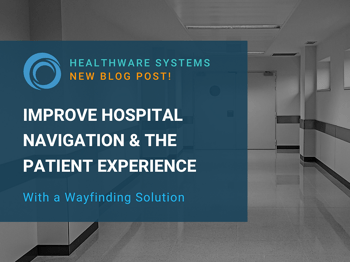Interoperability in Healthcare and Its Effect on Patient Safety and Public Health
HealthWare Systems Blog
Interoperability in Healthcare and Its Effect on Patient Safety and Public Health
Posted on Wednesday, December 13, 2017
Interoperability in healthcare is becoming increasingly important to the patient experience, public health, and patient safety. Patients should be able to trust that when they see multiple providers at various doctors’ offices, hospitals, pharmacies, labs and imaging facilities, and other locations, their health information is protected, accessible, and actionable.
Yet, research posted by the Office of the National Coordinator for Health Information Technology (ONC) found that only 26% of hospitals successfully conduct all 4 core domains (electronically sending, receiving, finding, and integrating/using key clinical information) of interoperability in healthcare.
Improving this percentage is absolutely vital to patient safety and public health. Consider how these two categories of patient safety are affected by inadequate levels of interoperability in healthcare:
Individual Patient Safety
According to the ONC’s study, only 46% of hospitals had required patient information from outside providers or sources available electronically at the point of care and only 18% reported that their providers “often” used electronically received patient health information from outside sources when treating their patients.
Tragically, treating a patient without all necessary medical information can result in adverse drug events due to inaccurate medication reconciliation, preventable pain and suffering, life-threatening medical errors, and even death.

Improving interoperability in healthcare can help prevent adverse drug events that affect patient safety.
At the very least, delays in access to relevant health data mean delays in treatment and extra discomfort, pain, or worry for patients and their family members as they wait.
Public Health & Safety
Public health reporting is critical for preventing/containing outbreaks of disease, preparing for health emergencies, investigating population health trends, educating communities, promoting healthy lifestyles, and informing and monitoring health policies. Public health reporting, to local, state, and federal organizations like the CDC, is also hindered by poor interoperability in healthcare.
The ONC explains in an Issue Brief that for public health reporting:
“The goal is to move to seamless, real-time or near-real-time bidirectional exchange of data . . . This allows for the most complete and up-to-date record possible.” (p. 4)
The accuracy of public health reporting, and the strength of the health policies created from it, can only be as sound as a system’s interoperability capabilities will allow.
Fortunately, there is technology that can greatly improve individual patient safety and public health by creating true interoperability in healthcare and seamlessly integrating with healthcare IT systems.
This is an ethical issue – if we want to protect the public and patient safety, we must make interoperability in healthcare a top priority.
#interoperability #publichealth #publichealthreporting #patientsafety #interoperabilityinhealthcare

